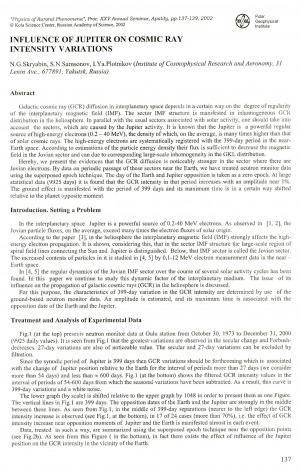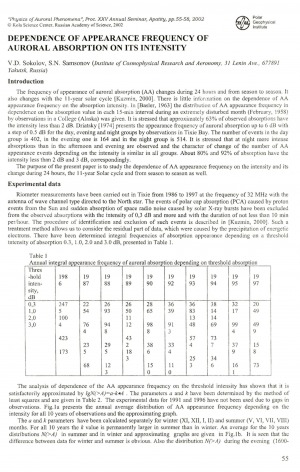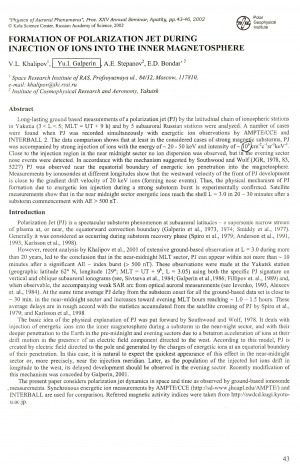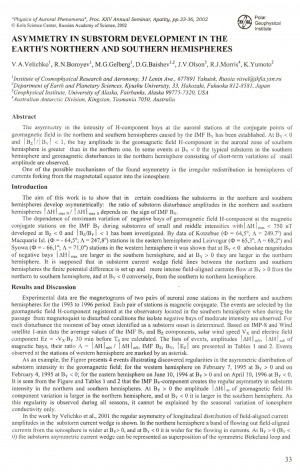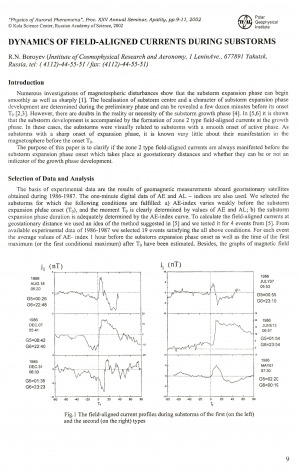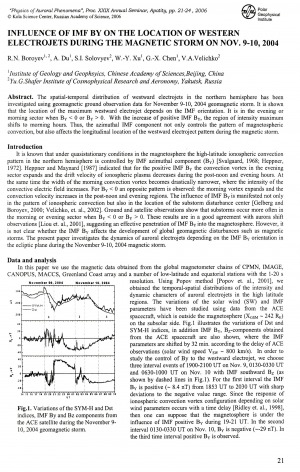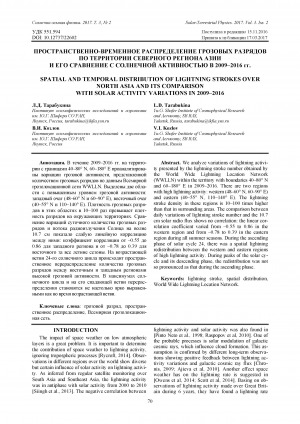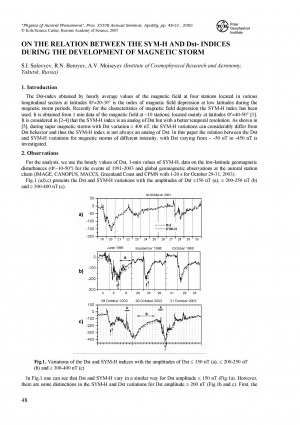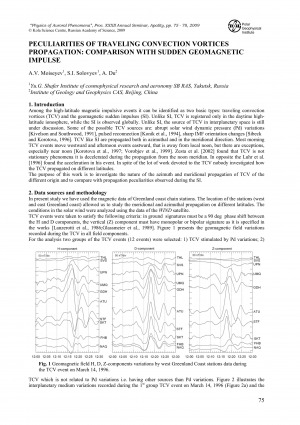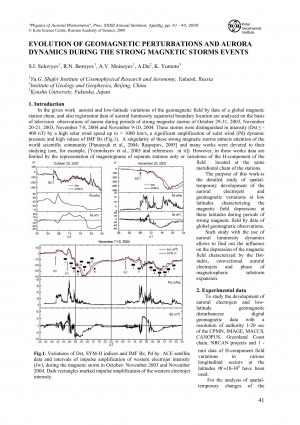Количество страниц: 4 с.
Skryabin, N. G. Influence of Jupiter on cosmic ray intensity variations / N. G. Skryabin, S. N. Samsonov, I. Ya. Plotnikov // Physics of auroral phenomena : proceedings of the 25th annual seminar, Apatity, 26 February – 1 March 2002. – 2002. – P. 137-139.
Количество страниц: 4 с.
Sokolov, V. D. Dependence of appearance frequency of auroral absorption on its intensity / V. D. Sokolov, S. N. Samsonov // Physics of auroral phenomena : proceedings of the 25th annual seminar, Apatity, 26 February – 1 March 2002. – 2002. – P. 55-58.
Количество страниц: 4 с.
Formation of polarization jet during injection of ions into the inner magnetosphere / V. L. Khalipov, Yu. I. Galperin, A. E. Stepanov, E. D. Bondar // Physics of auroral phenomena : proceedings of the 25th annual seminar, Apatity, 26 February – 1 March 2002. – 2002. – P. 43-46.
DOI: 10.1016/S0273-1177(03)00016-4
Количество страниц: 4 с.
Asymmetry in substorm development in the earth's northern and southern hemispheres / V. A. Velichko, R. N. Boroyev, M. G. Gelberg, D. G. Baishev, J. V. Olson, R. J. Morris, K. Yumoto // Physics of auroral phenomena : proceedings of the 25th annual seminar, Apatity, 26 February – 1 March 2002. – 2002. – P. 33-36.
Количество страниц: 3 с.
Boroyev, R. N. Dynamics of field-aligned currents during substorms / R. N. Boroyev // Physics of auroral phenomena : proceedings of the 25th annual seminar, Apatity, 26 February – 1 March 2002. – 2002. – P. 9-11.
Количество страниц: 4 с.
Influence of IMF by on the location of western electrojets during the magnetic storm on Nov. 9-10, 2004 / R. N. Boroev, A. Du, S. I. Solovyev, W.-Y. Xu, G.-X. Chen, V. A. Velichko // Physics of auroral phenomena : proceedings of the 29th annual seminar, Apatity, 27 February–3 March 2006. – 2007. – P. 21-24.
Количество страниц: 5 с.
We analyze variations of lightning activity presented by the lightning stroke number obtained by the World Wide Lightning Location Network (WWLLN) within the territory with boundaries 40-80° N and 60-180° E in 2009-2016. There are two regions with high lightning activity: western (48-60° N, 60-90° E) and eastern (40-55° N, 110-140° E). The lightning stroke density in these regions is 10-100 times higher than that in surrounding areas. The comparison between daily variations of lightning stroke number and the 10.7 cm solar radio flux shows no correlation: the linear correlation coefficient varied from -0.55 to 0.86 in the western region and from -0.78 to 0.39 in the eastern region during all summer seasons. During the ascending phase of solar cycle 24, there was a spatial lightning redistribution between the western and eastern regions of high lightning activity. During peaks of the solar cycle and its descending phase, the redistribution was not so pronounced as that during the ascending phase.
Tarabukina, L. D. Spatial and temporal distribution of lightning strokes over North Asia and its comparison with solar activity variations in 2009-2016 = Пространственно-временное распределение грозовых разрядов по территории северного региона Азии и его сравнение с солнечной активностью в 2009-2016 гг. / L. D. Tarabukina, V. I. Kozlov // Солнечно-земная физика = Solar-Terrestrial Physics. – 2017. – Т. 3, N 2 : 13-я российско-китайская конференция по космической погоде. – С. 70-74.
DOI: 10.12737/22602
Количество страниц: 4 с.
Solovyev, S. I. On the relation between the SYM-H and Dst- indices during the development of magnetic storm / S. I. Solovyev, R. N. Boroyev, A. V. Moiseyev // Physics of auroral phenomena : proceedings of the 28 th annual seminar, 1-4 March 2005. – 2005. – P. 48-51.
Количество страниц: 4 с.
Moiseyev, A. V. Peculiarities of traveling convection vortices propagation: comparison with sudden geomagnetic impulse / A. V. Moiseyev, S. I. Solovyev, A. Du // Physics of auroral phenomena : proceedings of the 32nd annual seminar, Apatity, 3 – 6 March 2009. – 2010. – P. 75-78.
Количество страниц: 4 с.
Evolution of geomagnetic perturbations and aurora dynamics during the strong magnetic storms events / S. I. Solovyev, R. N. Boroev, A. V. Moiseyev, A. Du, K. Yumoto // Physics of auroral phenomena : proceedings of the 32nd annual seminar, Apatity, 3 – 6 March 2009. – 2010. – P. 41-44.
